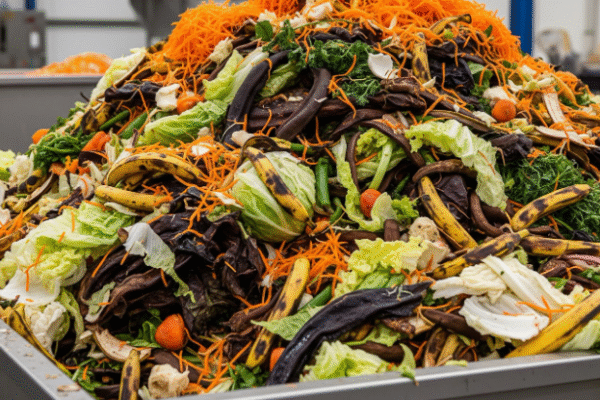Let’s dive into why ammonia is such an issue, how it’s been treated for so long, and what a new solution – CreChar – offers as a brighter, more reliable option.
Why Ammonia Is Both Necessary and Risky
Ammonia is produced in the breakdown of nitrogenous substances like manure, food residuals, and organic municipal solid waste. While it is needed as a nutrient to sustain microbial growth, high levels of ammonia can be lethal to the very same microbes that are needed to create biogas.
Research has shown that elevated levels of ammonia:
- Hinder essential microbes from performing their function of converting acetic acid into methane
- Cause a buildup of volatile fatty acids further overloading the system
- Disrupt the entire microbial network, and potentially the system would fail completely
Bottom line, there is just too much ammonia and it can stop the AD process in its tracks.
Traditional Solutions: Good, But Not Ideal
Researchers and operators have attempted numerous strategies for managing ammonia levels over the years:
- Diluting the feed or modifying the carbon-to-nitrogen (C:N) ratio
- Modifying pH to change ammonia into less toxic forms
- Using membrane distillation or other technologies to remove ammonia
- The incorporation of trace elements, by way of tailor-made microbial inoculants (bioaugmentation), or blowdown processes to reduce system stress
- Another involves the incorporation of support materials for improving microbial stability and process resilience. They help to create a more conducive environment for stressed microbes.
Among those most viable are engineered biochars like CreChar – a third-generation buffer material that actively regulates ammonia levels and fosters a stable microbial ecosystem.
A Smarter Buffer: How CreChar Works
CreChar is a specially designed biochar for anaerobic digestion. It acts as a natural buffer in the digester, which controls ammonia and protects sensitive microbial communities.
How CreChar benefits:
- Binds and buffers ammonia, specifically the toxic free ammonia (NH₃)
- Provides a refuge for microbes because it is porous and stable
- Stabilises pH and facilitates absorption of toxic substances
- Maintains microbial diversity and resilience, even in high-stress environments
“We save about £200,000 a year by using CreChar. What I have noticed from adding CreChar to the digester is that the efficiency increased, so I actually had to feed less material in – saving money on feedstocks.” – Robert Kennedy Operations Manager, Strathendrick Biogas
The Bottom Line
Ammonia inhibition isn’t going away – especially as plants continue to process high-nitrogen feedstocks in pursuit of higher energy output. But with smarter, more natural solutions like CreChar, it’s possible to protect your microbes, maximise performance, and keep your digester running smoothly.
….
Discover Our Case Studies:
For further information on Crechar® and other services from Carbogenics please contact:
Lidia Krzynowek: (COO and Co-Founder)
lidia.krzynowek@carbogenics.com




